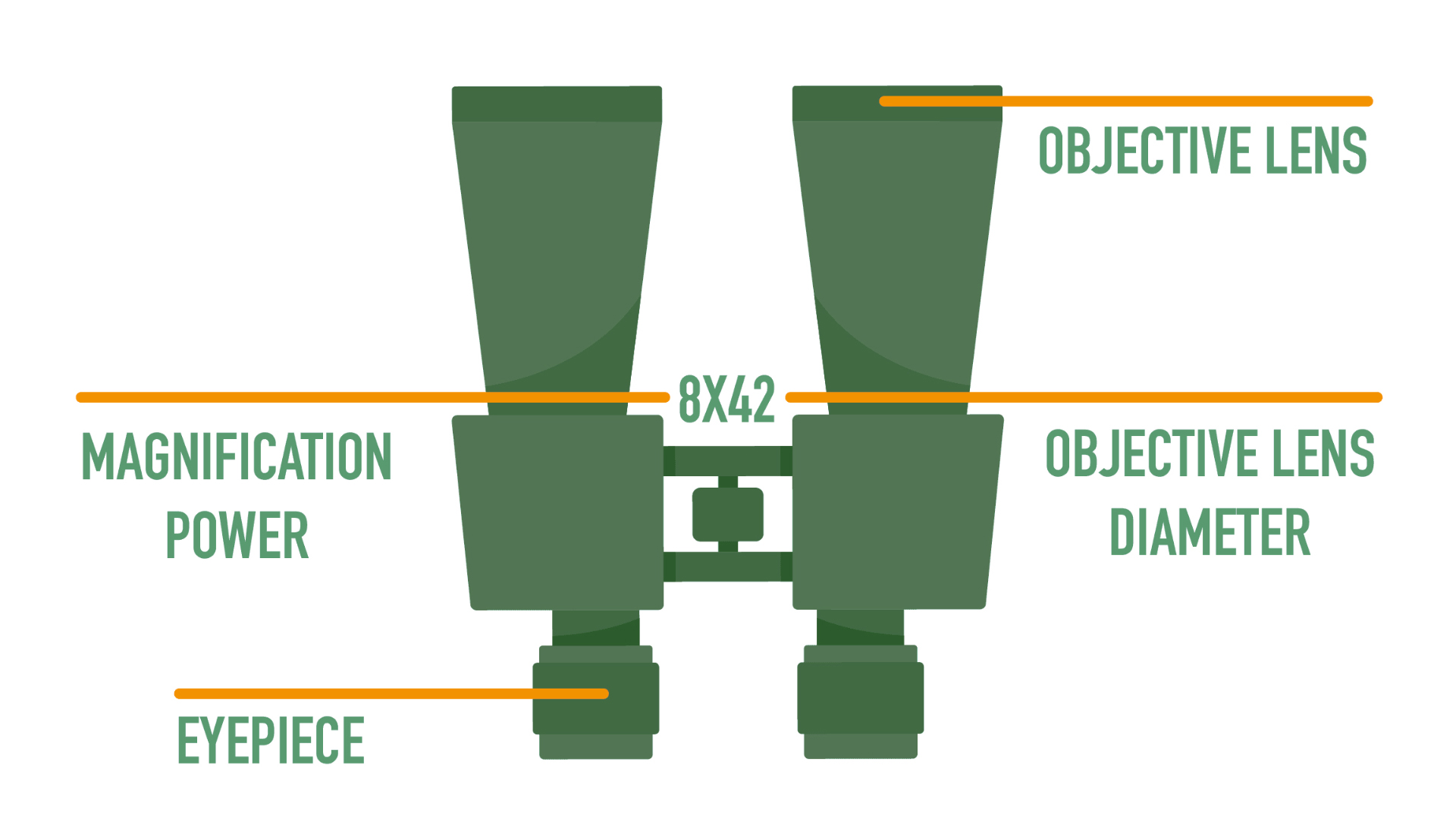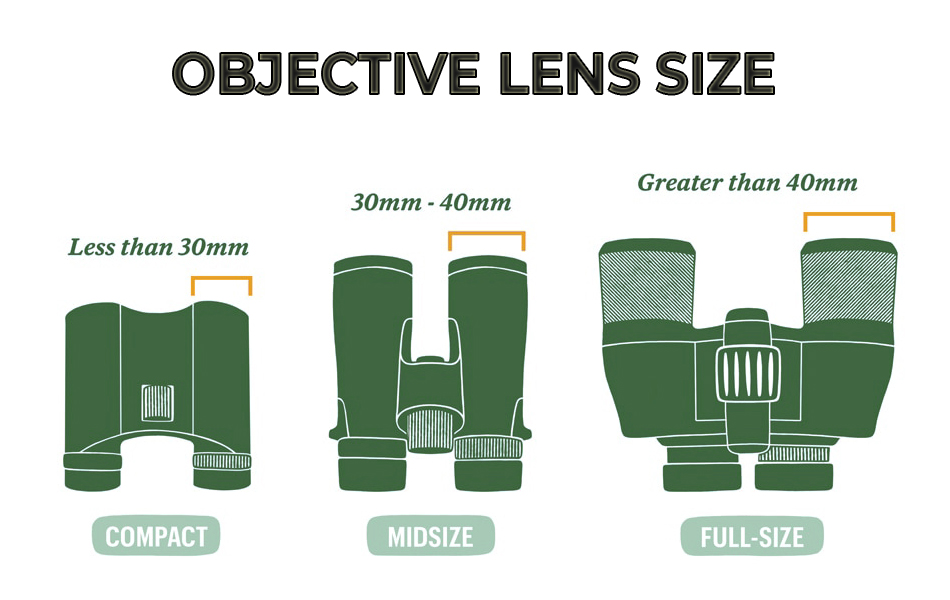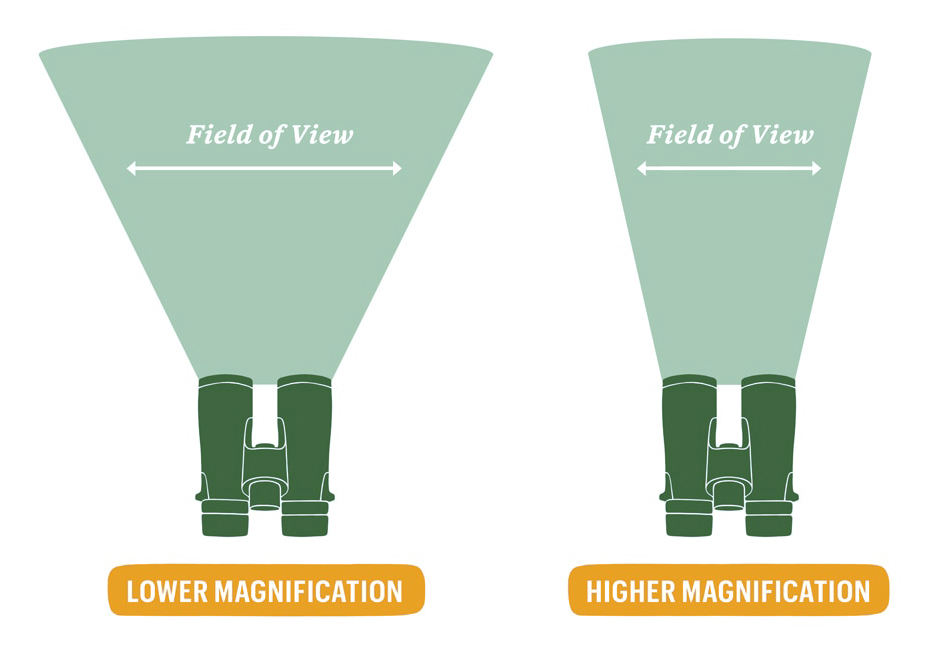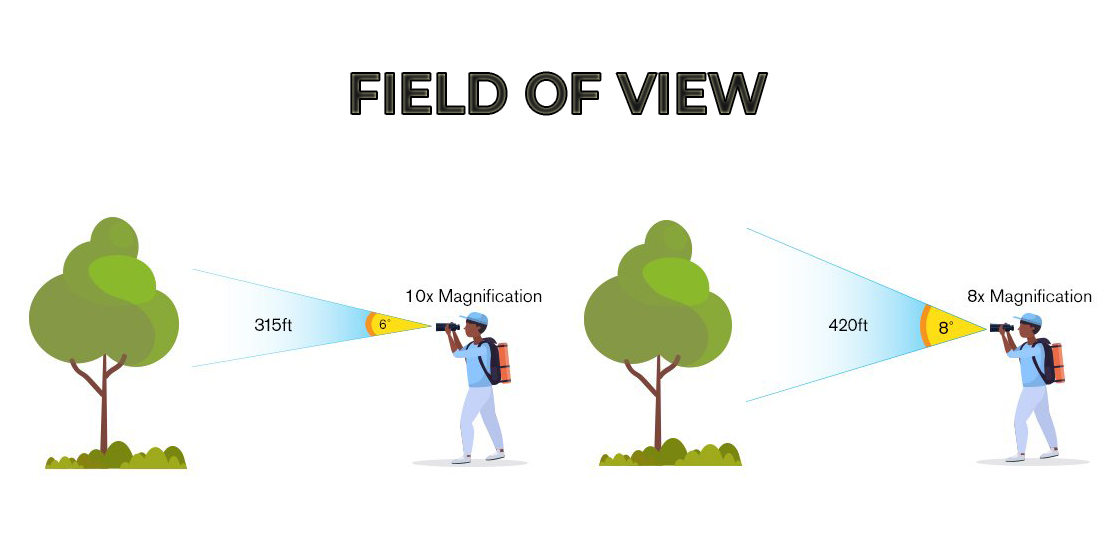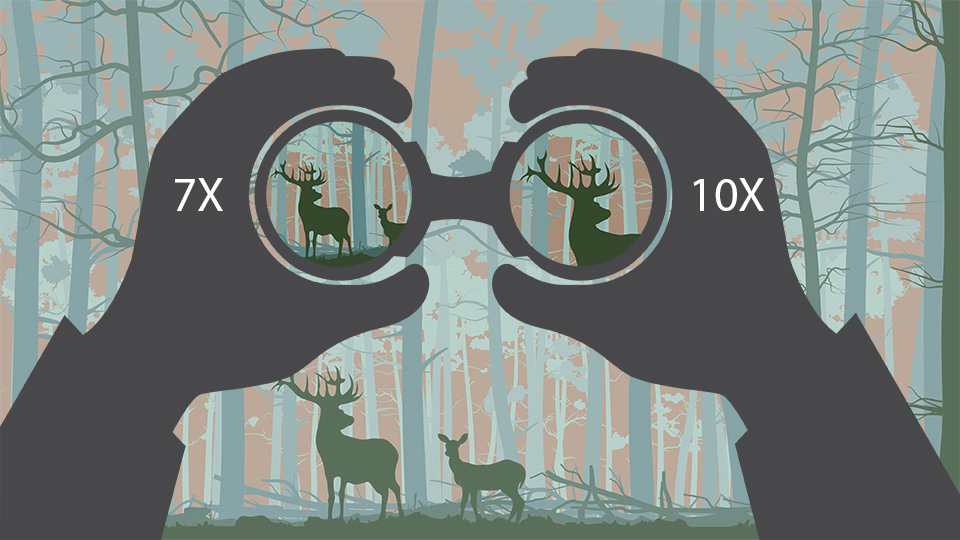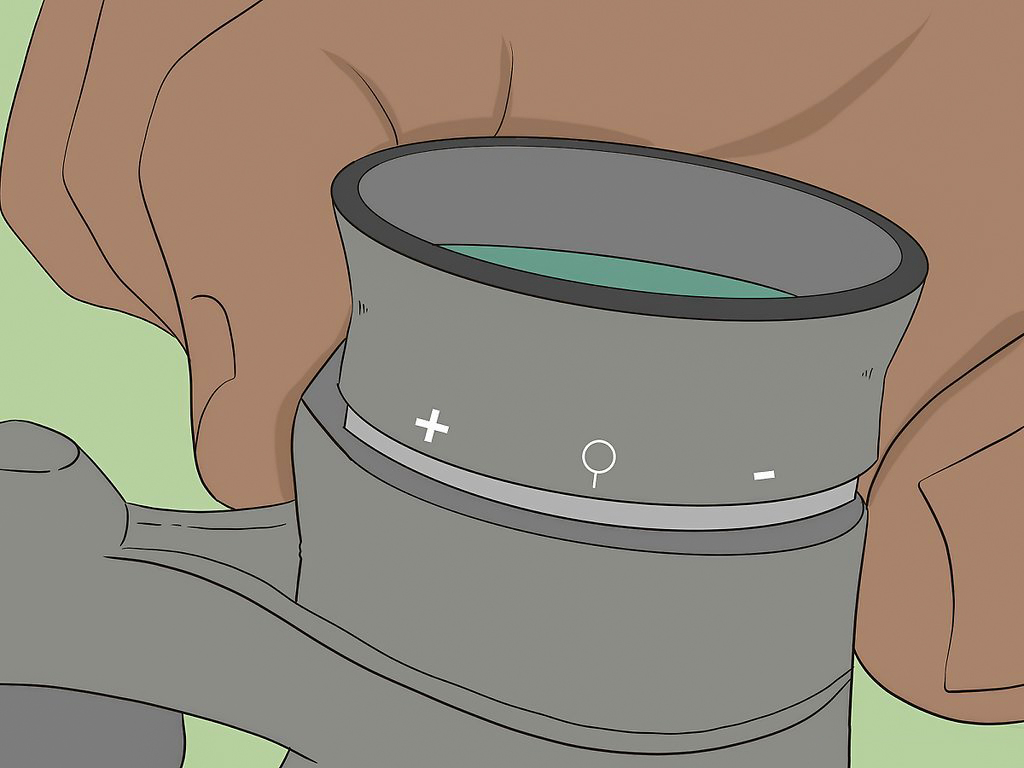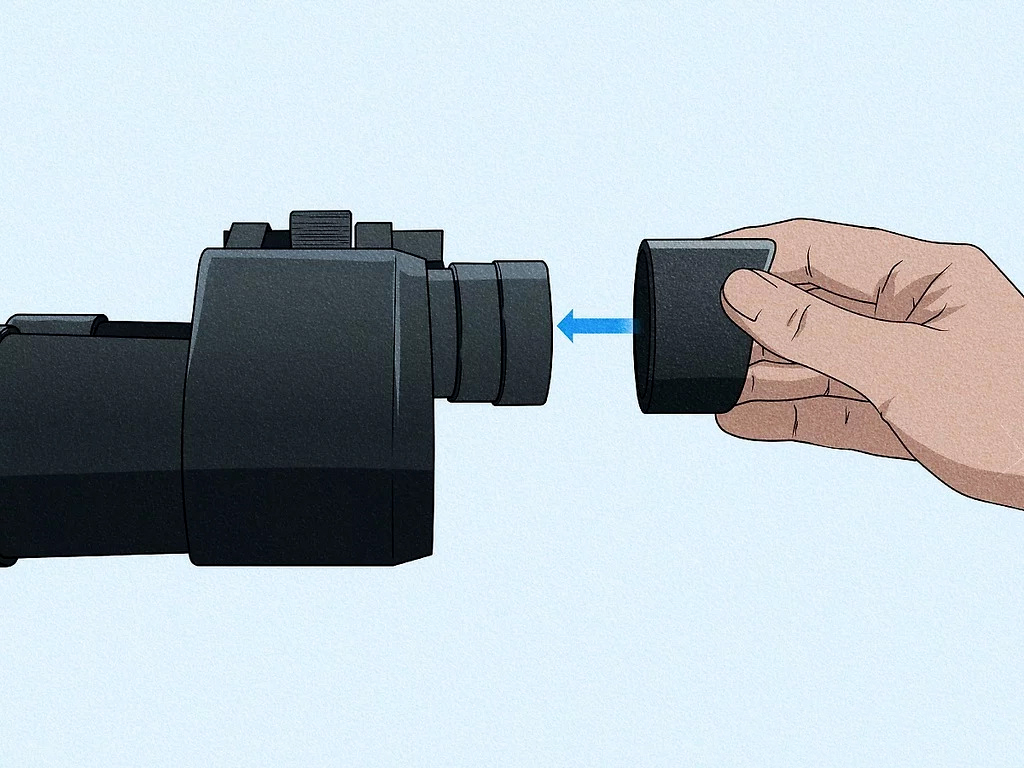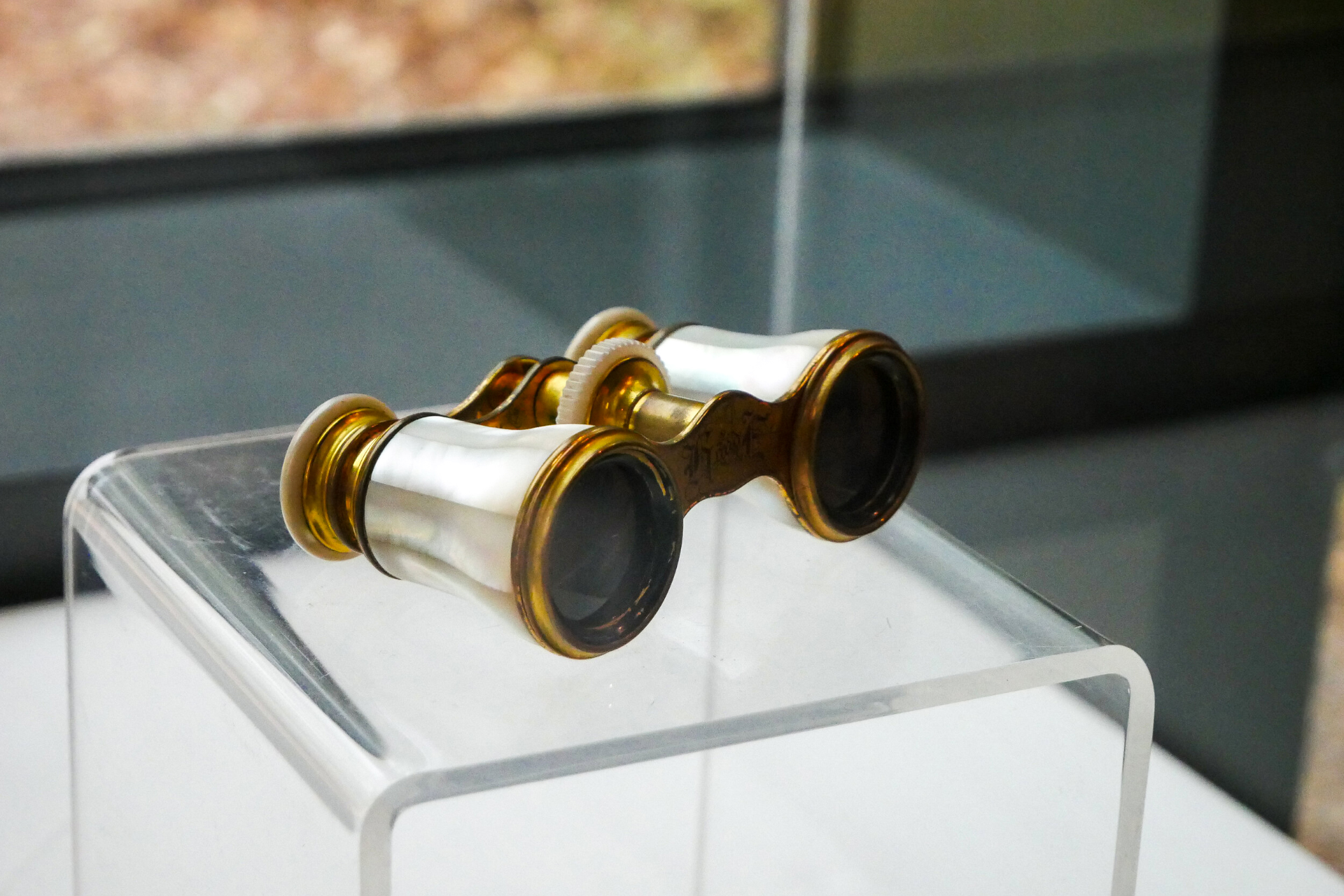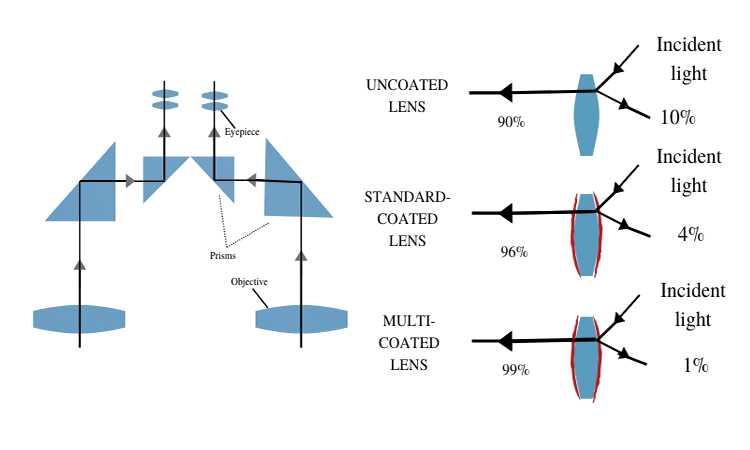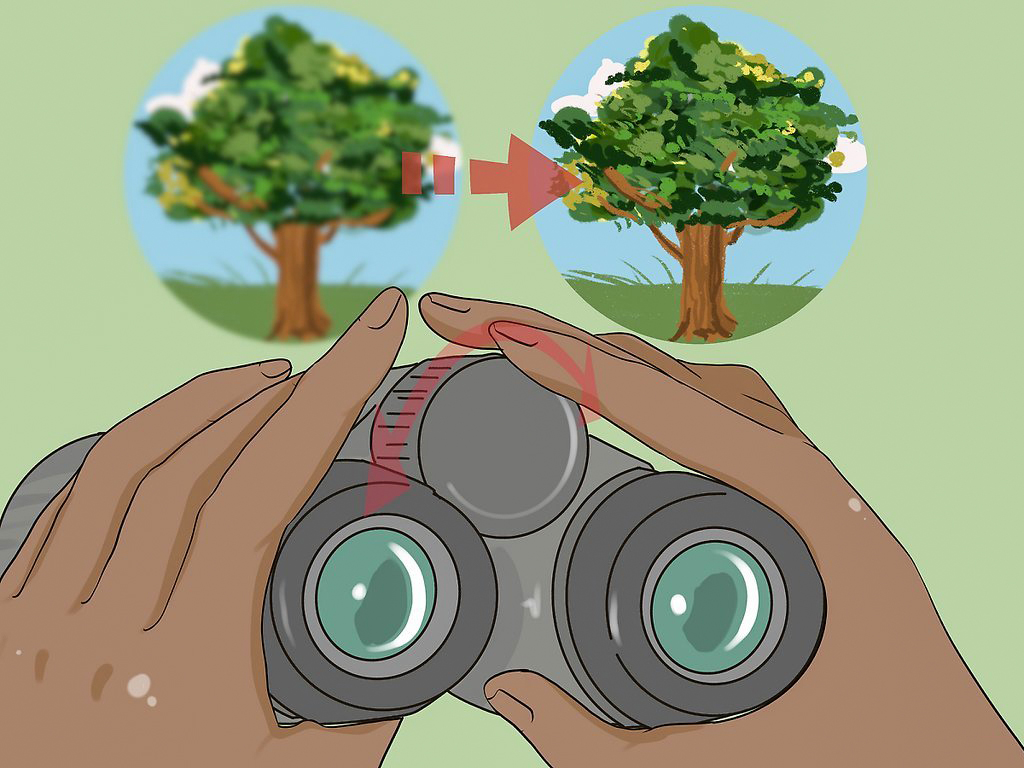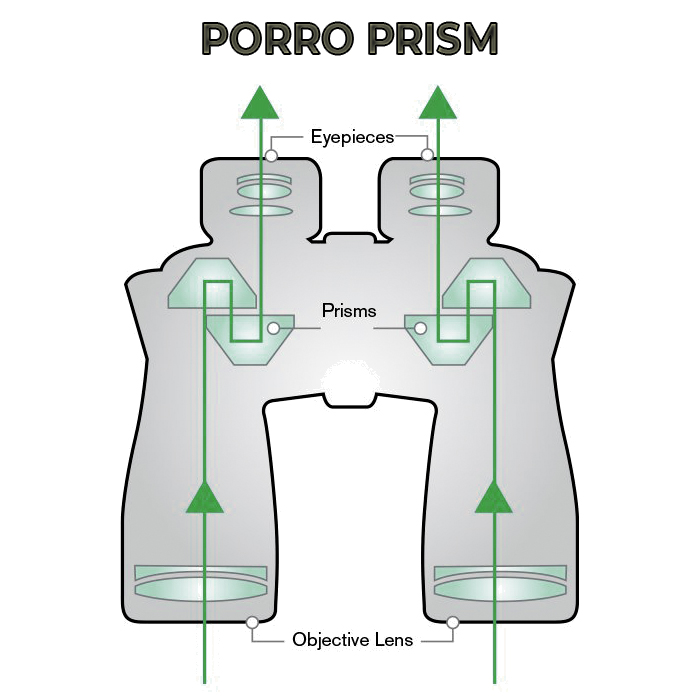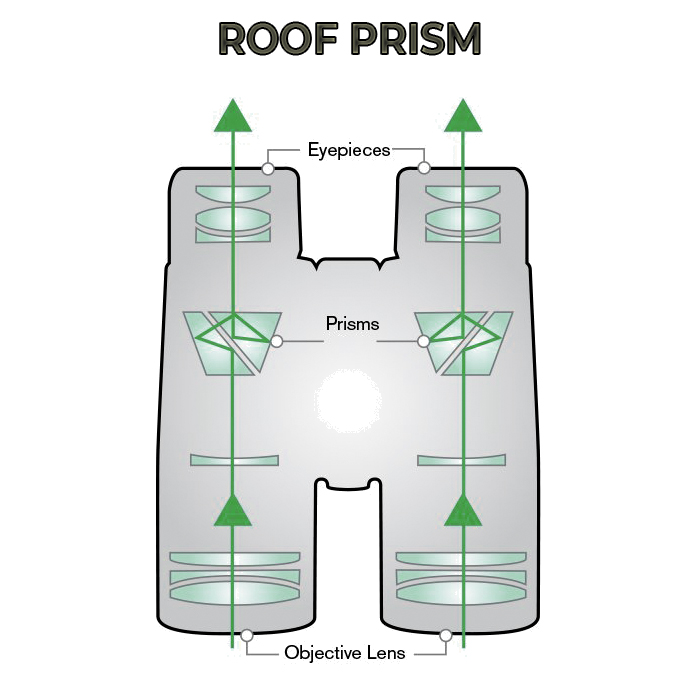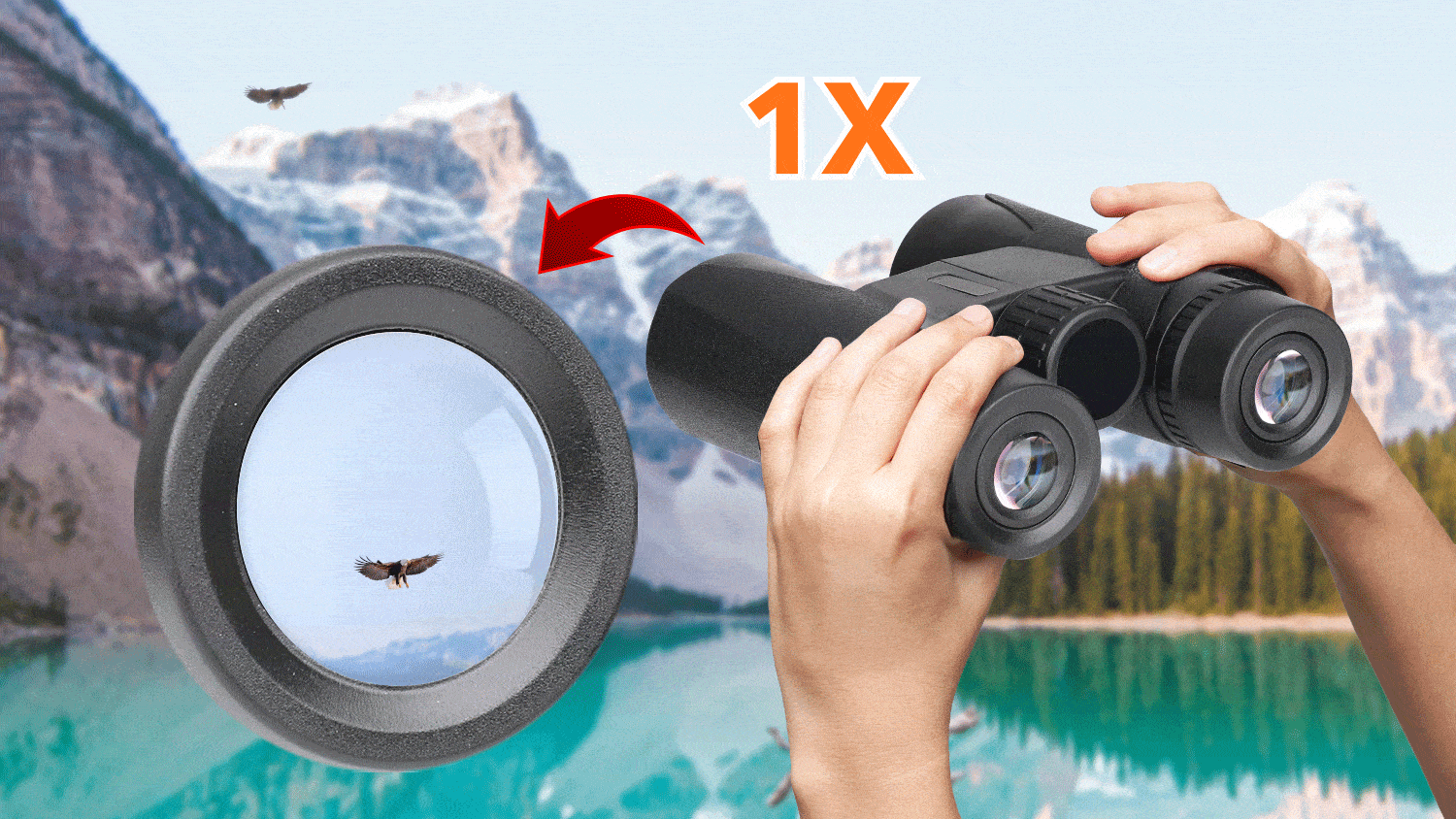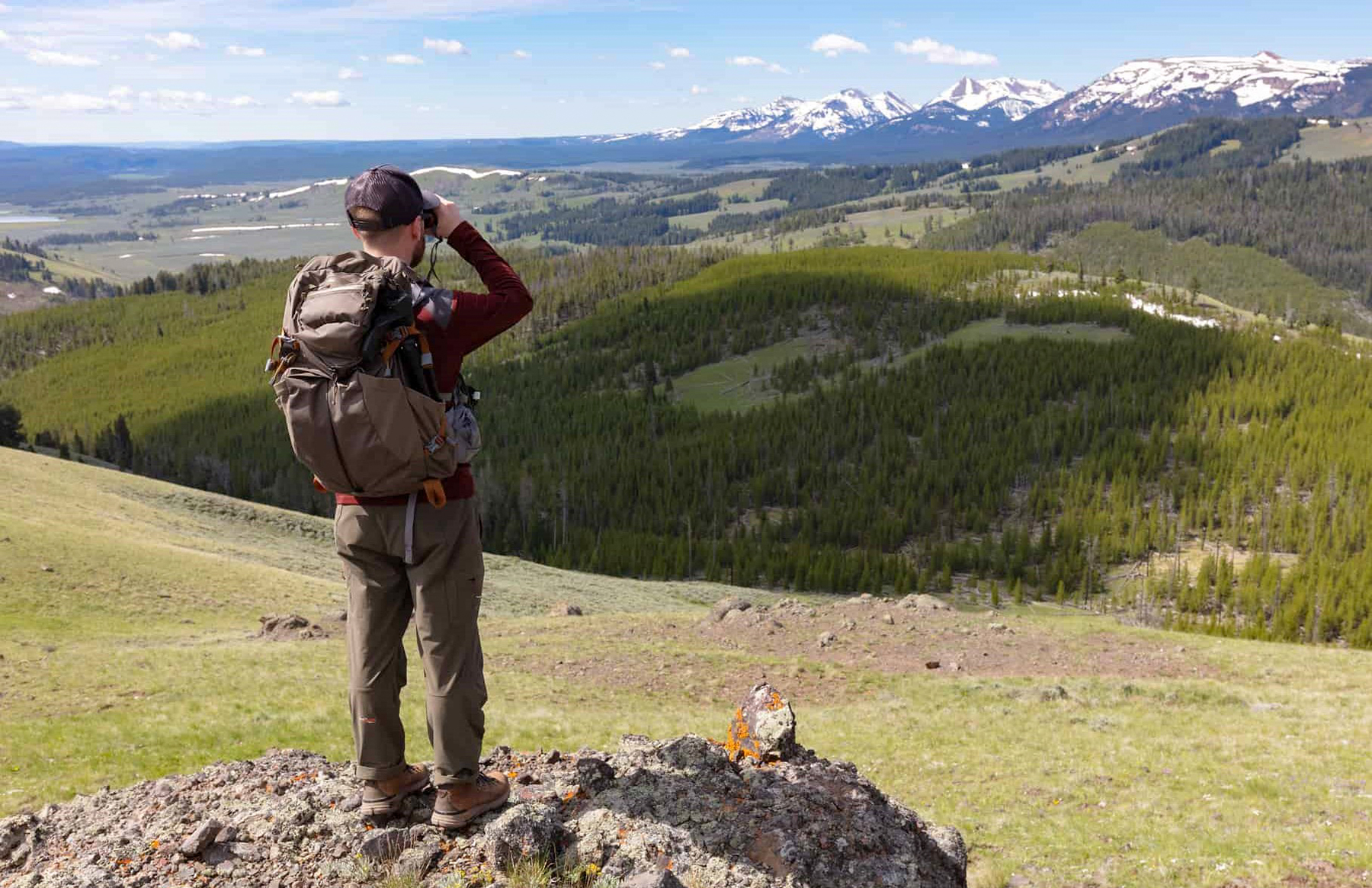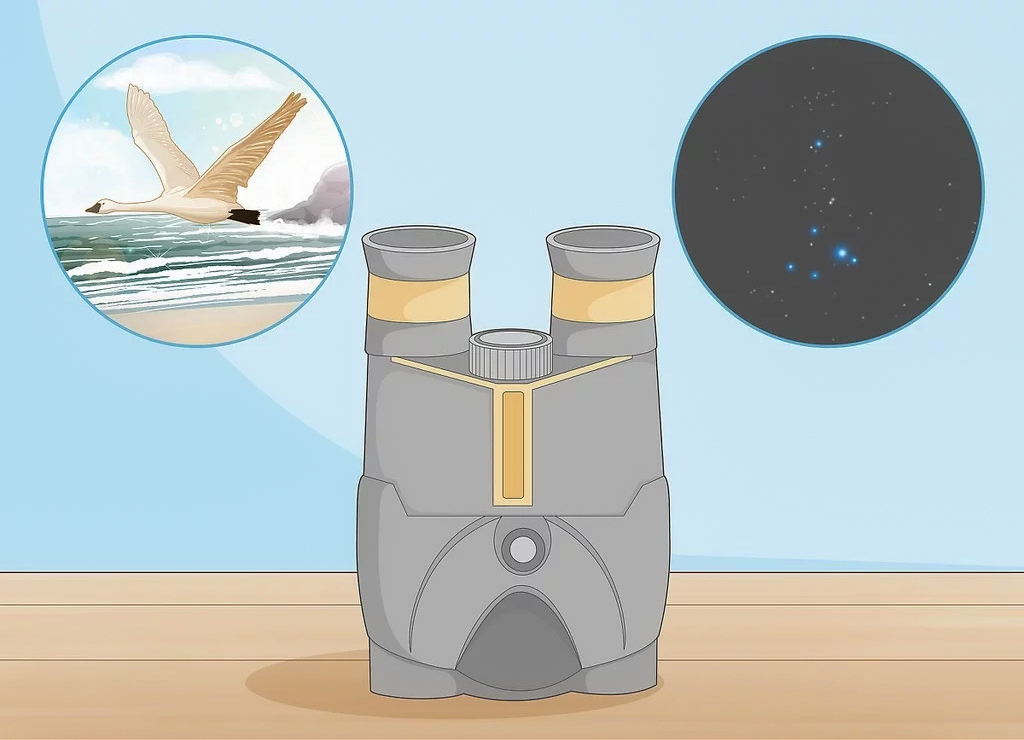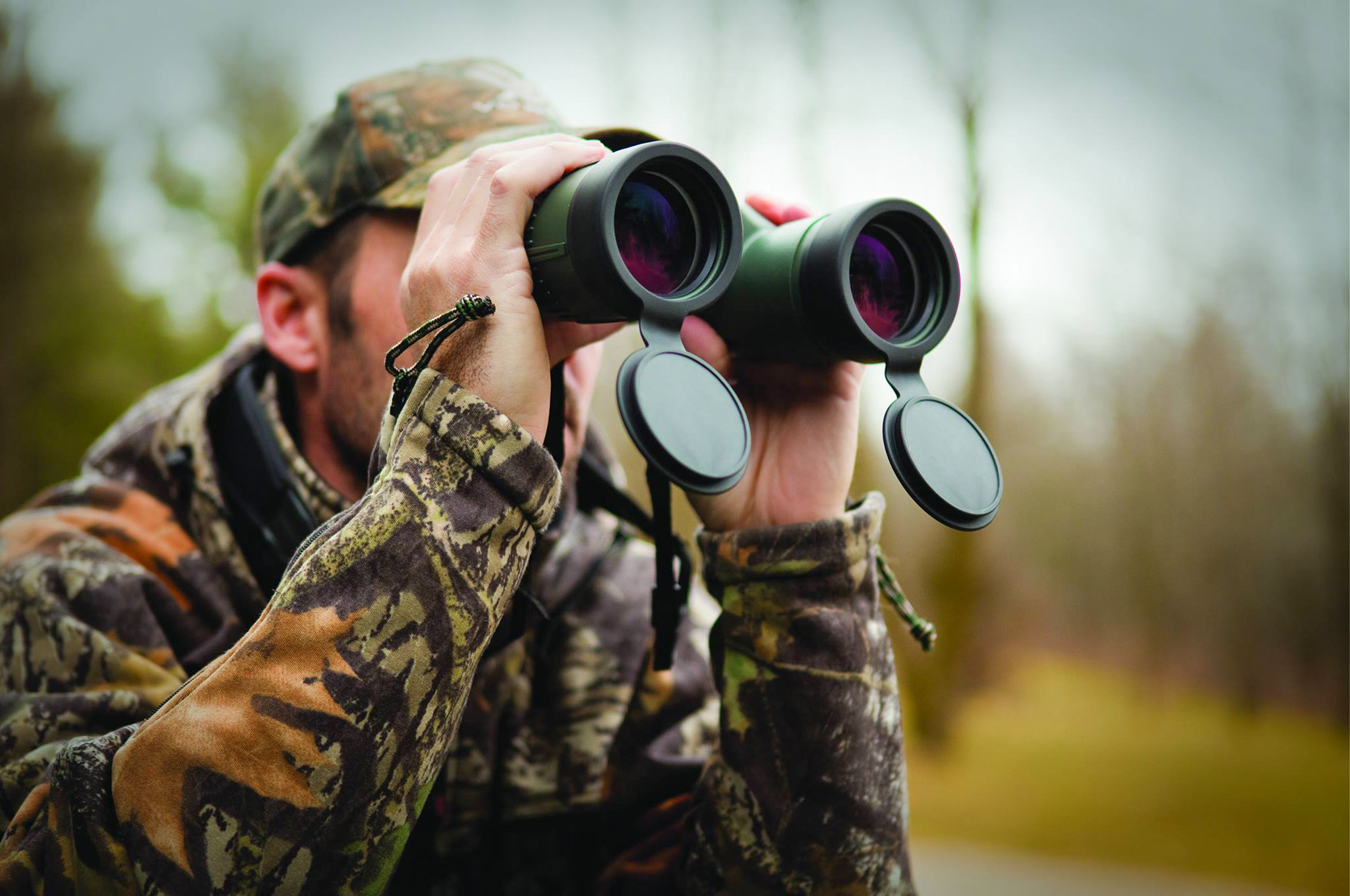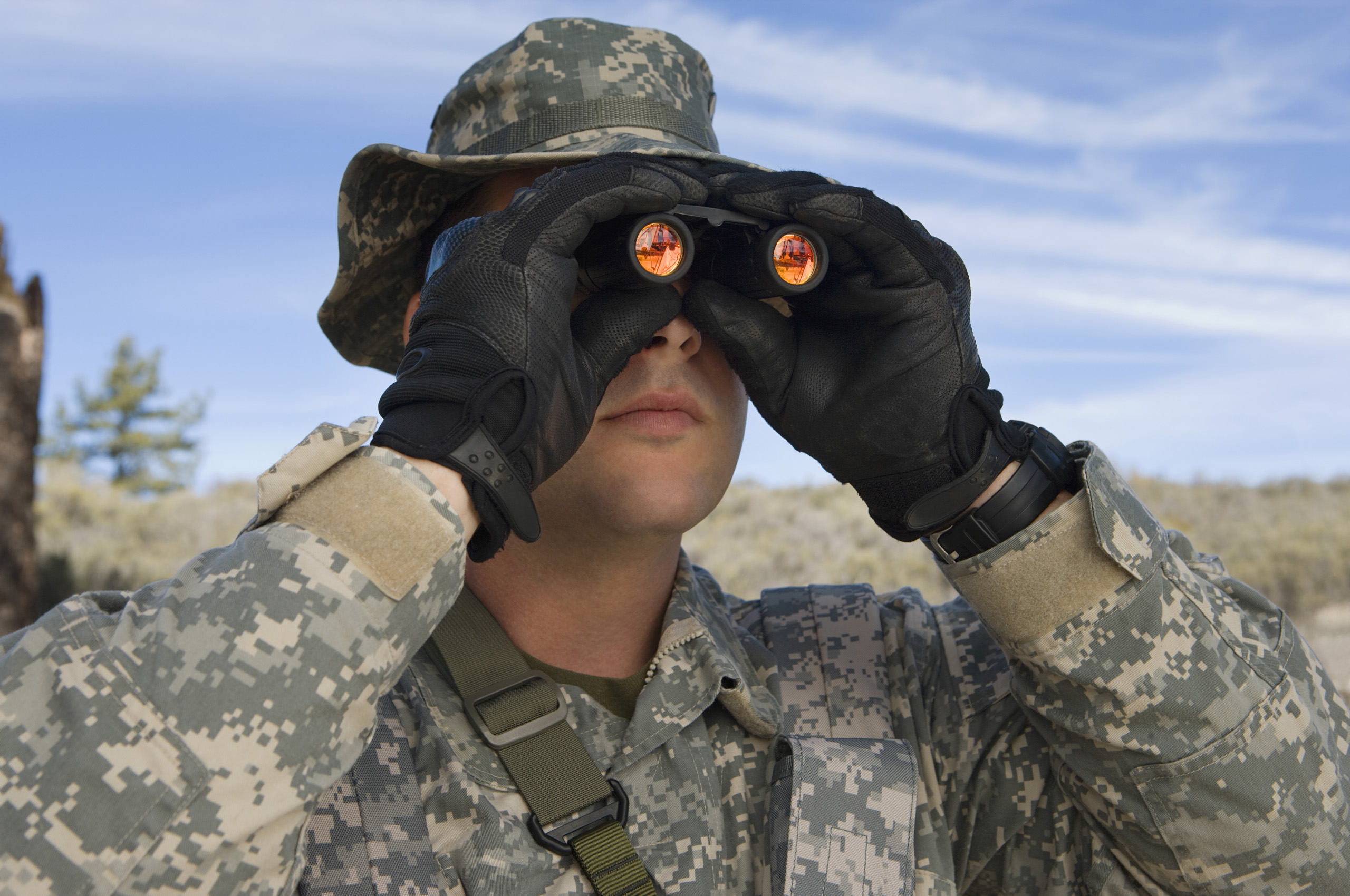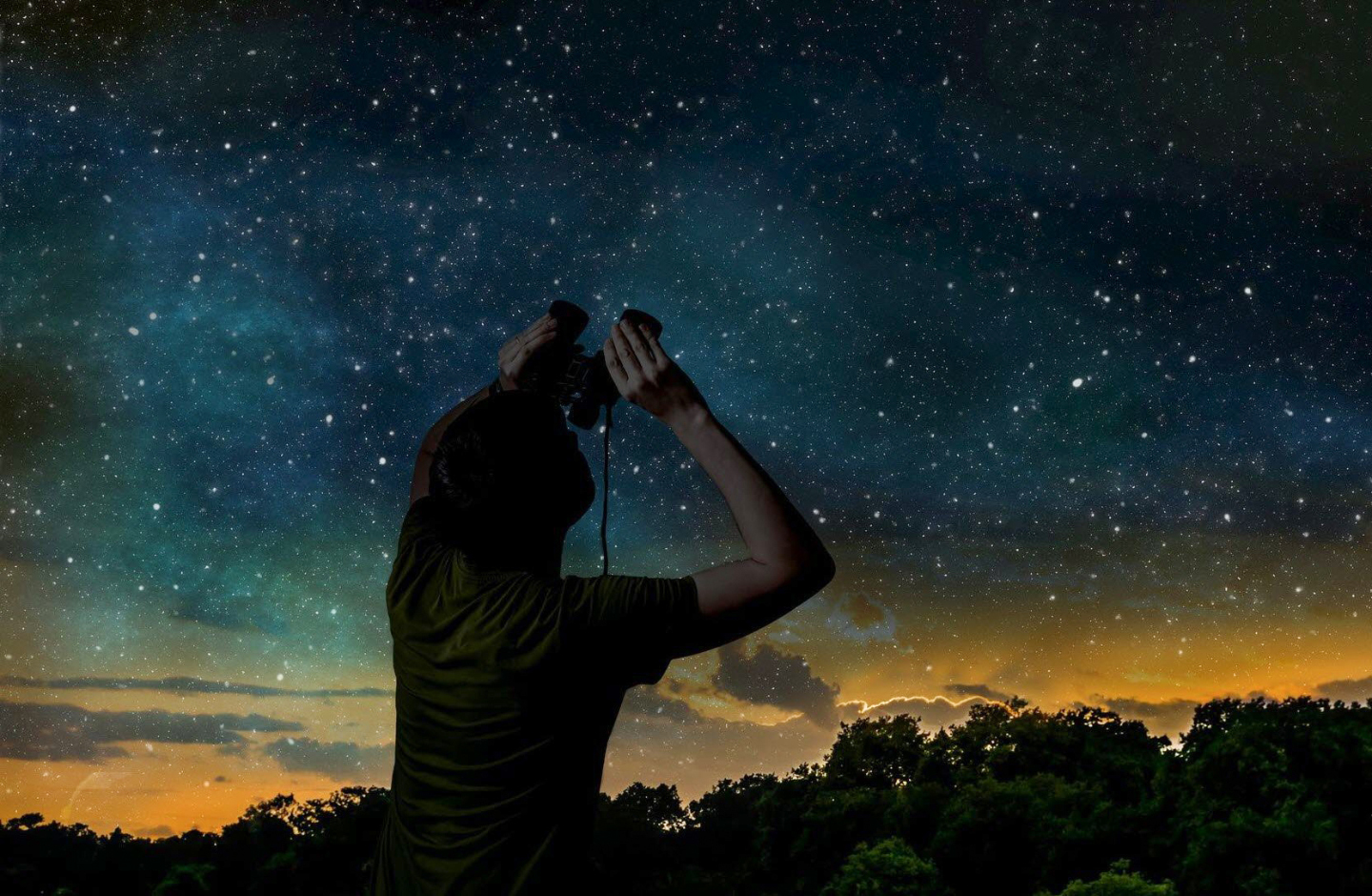There’s a wide variety of binoculars you can choose from and are available on the market.
They’ve been in use for centuries for all kinds of purposes. They are used by soldiers, sailors, hunters, and many other professionals and non-professional people for various reasons.
However, different specifications, features, and types can confuse someone new to choose the right pair for themselves.
Whether you need a pair of binoculars for stargazing, bird-watching, or simply for a concert, knowing the device can help you make a wise decision.
More importantly, it can also prevent you from spending extra on a model or feature you might not need.
So let’s explore the world of binoculars together to know what you need when you are out shopping for it.
Contents
Understanding the Specifications When Choosing Binoculars
The first important step you need when you choose the preferred binoculars is to understand their specifications.
You should know what the numbers and letters mean. More importantly, you must know the function of each component to choose a binocular with the correct specifications.
Let me take you through all the essential specifications one by one.
Objective Lens Size
There are three main categories of binoculars based on the size of the objective lens you can choose from: compact, midsize, and full size.
The size of the objective lens is mentioned as the second number in the model names. For instance, a lens with model number 4×30 means it has a 30mm objective lens.
Here are the ranges for objective lens size for all three categories:
- Compact Binoculars: the objective lens size for the compact lens is less than 30mm
- Midsize: the objective lens size for the midsize category is between 30mm to 40mm
- Full-size: the objective lens size for the full-size category is greater than 40mm
Compact binoculars are perfect if they are going to spend most of the time in your bag. Their lightweight and compact size allow for greater portability.
However, a midsize model works like a charm if you want a more comfortable hold and brighter images.
The full-size has its perks but is sometimes too heavy to hold for long periods of time.
Binocular Magnification Power
The next crucial binocular specification is the magnification power.
The most common magnification power falls within the 8-10x range. However, you can still find models that go beyond the upper and lower limit of this range.
Lower magnification powers offer a wider field of view. On the other hand, higher magnification powers offer a more detailed and closer look at the object.
For instance, a binocular with 8x magnification power will offer more area in the view as compared to 10x binoculars which offer more detail in the image.
While higher magnification powers do offer more detail, they do this at the expense of steady viewing.
If you use the binoculars on a moving platform, choose binoculars with lower magnification. Otherwise, seeing the object clearly can become a hassle.
Binoculars Field of View
As discussed above, the magnification power affects the field of view. But whether you need a better field of view or not depends on a number of factors.
If you are going to locate small objects or moving birds, you will need a wider field of view for effective scanning.
More importantly, a larger field of view also lets in more light, allowing for brighter images.
The field of view is also affected by the eyepiece design. As a result, you must check this specification before making the purchase.
Always check it on a binocular. It is stated as the width of the area that can be viewed at a glance.
Exit Pupil & Brightness
Exit pupil can be calculated by dividing the objective lens diameter with the magnification power.
The greater the number you get from these calculations, the greater the exit pupil.
Bigger numbers indicate better low-light viewing and brighter images. More importantly, it indicates that the image will be more stable and clearer.
To measure the exit pupil of a binocular with numbers 8×40, divide 40 by 8. The answer you get is the exit pupil diameter in mm. This diameter represents the shaft of light that reaches your eyes.
An exit pupil diameter of 5mm works like a charm in low light conditions.
For instance, if you are going to use binoculars at dusk, dawn, or with lots of tree cover, a higher exit pupil diameter makes viewing easier.
For bright light conditions during the day, smaller exit pupil sizes are fine as well.
Binoculars Eye Relief
Eye relief is an important specification to consider, especially for those who wear glasses.
It is basically the distance between your eye and the eyepiece while you are watching the whole field of view through the binoculars.
It is recommended to go for an eye relief of 11mm or more if you wear glasses.
Most binoculars come with adjustable eyepieces. You can adjust them to their min or max eye relief value as per need.
Diopter
A diopter helps adjust or compensate for the difference in focus distance for both eyes.
Using the diopter adjustment dial, you can set up the focus for one eye, preferably your dominant eye. Once it is set, you can then move on to our focus with both eyes perfectly.
Additional Features to Choose From
Now that we have discussed all the primary specifications that need understanding and research, it is time for additional features on how to choose your binoculars.
All of these are applicable based on your requirements. Chances are you will not need all of them. However, having them when needed is always a pleasure. So let’s explore all of them one by one:
Waterproof vs. Water-Resistant
You want to look at weather-resistant or waterproof binoculars if you will be using them on a boat, in the rain, in a kayak, or in generally bad weather.
However, before you decide to go for either, make sure you understand the difference between waterproofing and water resistance.
Water-resistant binoculars are designed to handle light rain. However, they cannot keep the water completely out. Therefore, you cannot put them through heavy rain or even a small waterbody.
On the other hand, waterproof binoculars have O-rings to seal out any kind of moisture.
However, even this type of protection is only enough to handle a quick splashdown. You still can’t put them through extended periods of submersion.
Glass Lenses vs. Plastic Lenses
The decision is going to be yours, so I’m just going to walk you through the benefits and drawbacks of glass and plastic lenses.
If you aim for high-quality images, glass is what you need. Glass tends to partially reflect light that falls on it. However, the right coating makes this issue go away.
You must know that the better image quality of a glass lens comes at a high price, especially if you are getting binoculars with extra-low dispersion (LD glass).
As for plastic lenses, you do have to compromise on image quality. However, the durability of a plastic lens surpasses that of a glass lens.
Therefore, if you plan on using the binoculars in rugged conditions and mostly outdoors, choose a pair of plastic lens binoculars. They can last you a long time.
But if you want the durability of a plastic lens alongside the image quality of a glass lens, there are relatively expensive plastic lens options that you can go for.
Optical Coating & Light Transmission
An optical coating is one of the most expensive and important elements in a binocular. This is true for all-optical devices, actually.
This is because the light that falls onto the lens is not all transmitted to the eye. Some of it gets lost in the optic and fails to transmit to the end.
The optical coating helps improve light transmission by maximizing the amount of light entering the objective lens to the eye.
There are four different kinds of optical coatings on lenses: coated, fully coated, multi-coated, and fully multi-coated.
You should consider choosing fully multi-coated lens binoculars, as they transmit 95% of the light from the objective lens to the eye.
Binoculars Weight
Binoculars need to have the right weight for you to hold and use comfortably. Generally, people feel anything above 35 ounces is too heavy for comfortable use and carry.
As a result, anything below 30 ounces should be good to go. However, this varies from person to person.
More importantly, the binocular harness plays a role as well by supporting the weight on the shoulders instead of the neck.
Focus Type
Focusing is vital for all pairs of binoculars. The focusing arrangement in binoculars changes the distance between the objective lenses and the ocular lenses.
The focus type of binoculars can be divided into three main classifications:
Fixed Focus/Focus Free: This type of focus is fixed and cannot be changed. The binoculars are set to a single magnification and range. You can find a pair of fixed binoculars for quite cheap. However, don’t expect good image quality due to the lower price.
Central Focus: This type of focus uses a center-mounted wheel to control both lenses. You can achieve a quick refocus without having to adjust the eyepiece.
Independent Focus: This type of focus adjusts the single eyepiece. It has been famously used in military applications for quite some time now.
Know the Mechanical Designs and Types of Binoculars
Binoculars come in different mechanical designs and types you can choose from. You must have seen some in the movies or documentaries.
But when you are out there shopping for yourself, it becomes vital to know what design and type are suitable for you. So let me help you understand what types exist and what they do!
Porro Prism Binoculars
Porro Prism Binoculars are often used in movies due to their classic binoculars design.
You can easily recognize them anywhere as they feature a wide joint between the objective lenses. Basically, this is a binocular design that comes to your mind when you think of one.
It was designed using the prism image erecting system by the Italian optician Ignazio Porro in 1854.
This type of binoculars is best for watching natural scenery, thanks to their incredible image quality. However, Porro Prism binoculars aren’t very durable, so take extra care of them.
Roof Prism Binoculars
Roof Prism binoculars are more modern and up-to-date as compared to Porro Prism.
They were first introduced in the 1880s designed with a narrower and straighter optical pathway. As a result, roof prism binoculars are less bulky and more compact.
It is quite easy to differentiate a Roof prism from a Porro prism based on their designs.
More importantly, the high-quality lens used in roof prism allows for crispier images.
Standard Size Binoculars
A standard-size binocular is also known as a full-size binocular. It gets the standard in its name because it can be used for almost everything.
It might not offer you the best results in all scenarios but is just good enough to get the work done. You can take this one to spectate sports or observe nature and much more.
Compact Binoculars
Compact binoculars, as the name suggests, are lightweight and smaller in size. Therefore, they are best to choose for those who travel a lot and cannot carry big, heavy-weight binoculars in the bag pack.
Usually, hunters take them alongside on hunting trips and hikes, as well as people who go to concerts or theaters.
Image Stabilization
Image stabilization is a recent addition to modern binoculars. This feature is often seen in high-end models.
Binoculars that have image stabilization are integrated with either an internal vibration dampener or a gyroscope.
While image stabilization is quite effective, don’t expect it to produce the same results as a tripod.
However, it still comes in handy, especially for people with chronic hand tremors.
Choose Binoculars According to the Purpose of Usage
The type, features, and specifications play a part in how and for what you’re going to use the binoculars.
I will be explaining each in detail so that you can make an informed decision.
Binoculars for Hiking & Backpacking
Since hiking and backpacking mean you will be carrying them around for a long, the best type for this kind of activity is compact binoculars.
You should aim for magnification between 8-10x with an objective diameter smaller than 28mm.
It is always wise to go for waterproof or water-resistant models, given that you will be out there in the open.
Keep the weather conditions in mind. More importantly, rubber coating helps with durability and protection out on the field.
Binoculars for Bird Watching
Considering size and weight aren’t that big of a concern here, midsize or full-size binoculars with 8-10x magnification power are good to go.
However, keep in mind that bird-watching requires you to scan a wider field of view. As a result, do not aim for very high magnification powers as they reduce the field of view.
Water resistance and fog proofing can also come in handy. However, these additional features must be considered based on your need and conditions.
Long-Range Hunting Binoculars
Given that you will need to look at long-range targets, always aim for higher magnification powers.
This will come in handy when you are quite far away from the animal. In case you have trouble carrying more weight, you can always get a midsize objective lens for a more compact model.
More importantly, the hunting field can be quite unpredictable, so make sure you consider the weather and waterproofing.
It is important to note that long-range hunting is not the same for everyone. It highly depends on whether you’re using a tree stand, ground blinds, or another hunting tactic to bait the game.
You must consider your personal conditions and the animal you are hunting. Only then can you find the perfect pair of binoculars for yourself.
Binoculars for Stadiums and Concerts
Binoculars for concerts and sporting events need to have the right balance between the depth and width of the field.
If you are going to a long-distance sporting event, a binocular with specifications 8×42 (or similar) will do the job.
In case it’s a mid-range concert, you can go down to 5×35 or 7×35.
Marine & Boat Binoculars
Marine and boat binoculars tend to have low magnification powers, such as 8x or less. The reason is that higher powers do not offer a steady view.
That, combined with the movement of the boat, makes it a challenger to find viewing stability.
You also have to consider getting a waterproof binocular as it will be subject to water splashes on the boat or around such a huge water body.
Astronomy Binoculars
The last on this list is astronomy binoculars. In this situation, you need a pair with maximized magnification and a fully multi-coated lens for maximum light transmission.
The instability that comes with higher magnification powers can be compensated for with a tripod to hold the binoculars while stargazing.
Check the Manufacturer when Choosing Binoculars
As you narrow down your binocular choice based on everything discussed above, the last thing to consider is the manufacturer.
Make sure you are purchasing from a reliable and well-known brand. Binoculars are long-lasting products that you do not buy every day, so choose wisely.
Look for customer reviews, make a product comparison with competitors and check out the market prices.
Check if they are offering any guarantees for the product. Chances are they will if they are making premium products.

Hi, my name is Michael Goodman. As a skilled hunter and a man of the field, I will show you some sophisticated, intelligent, and useful hunting methods and techniques.


